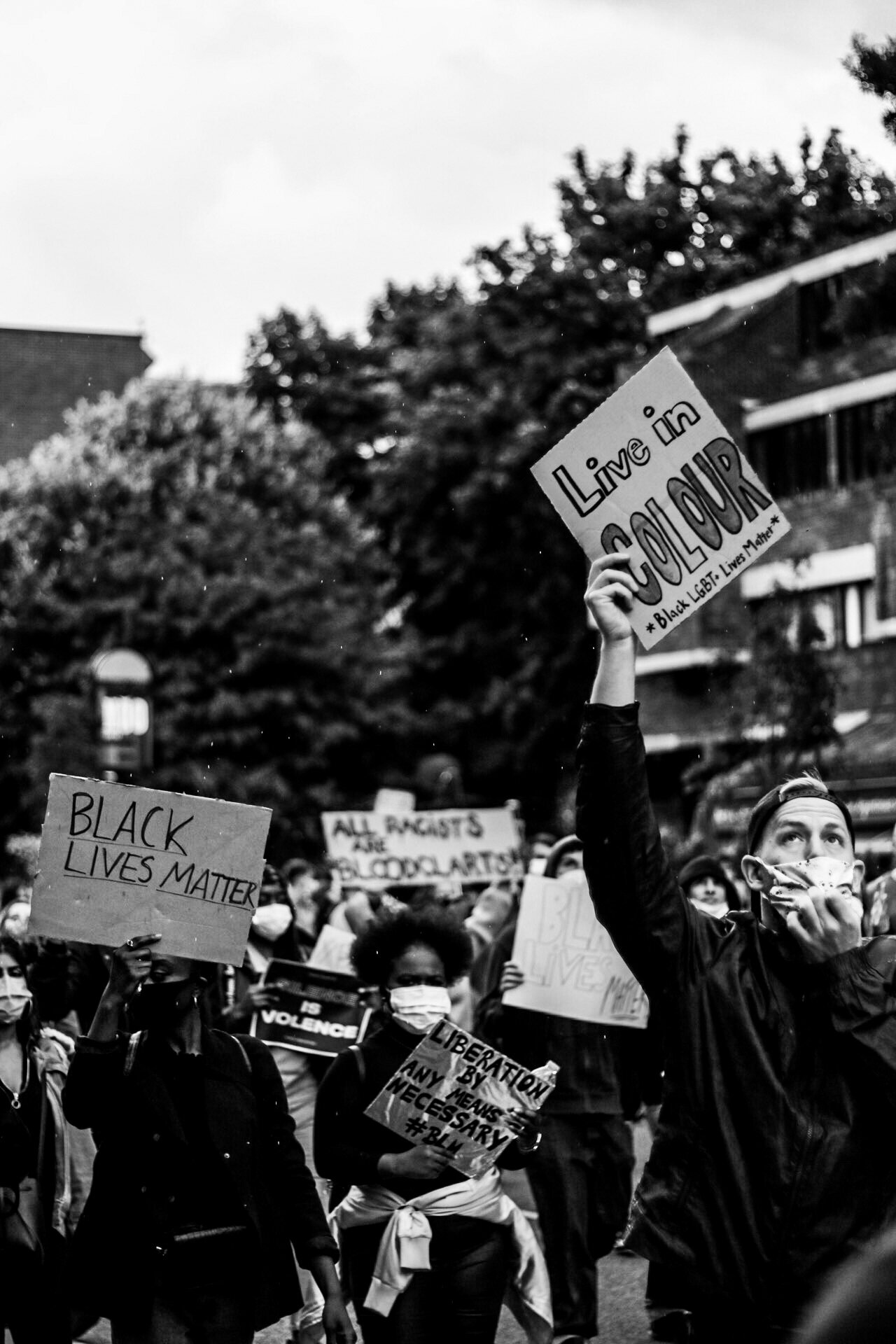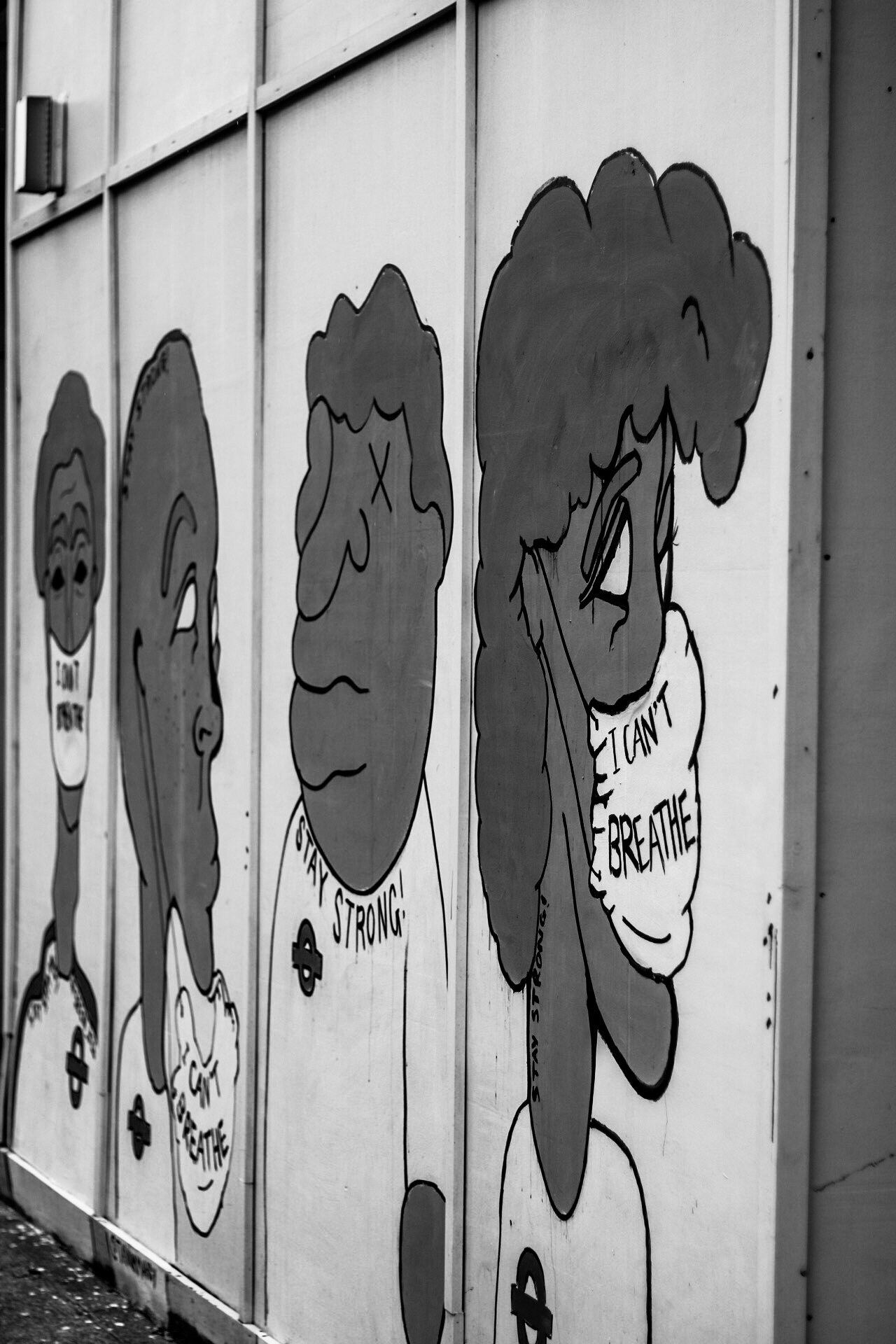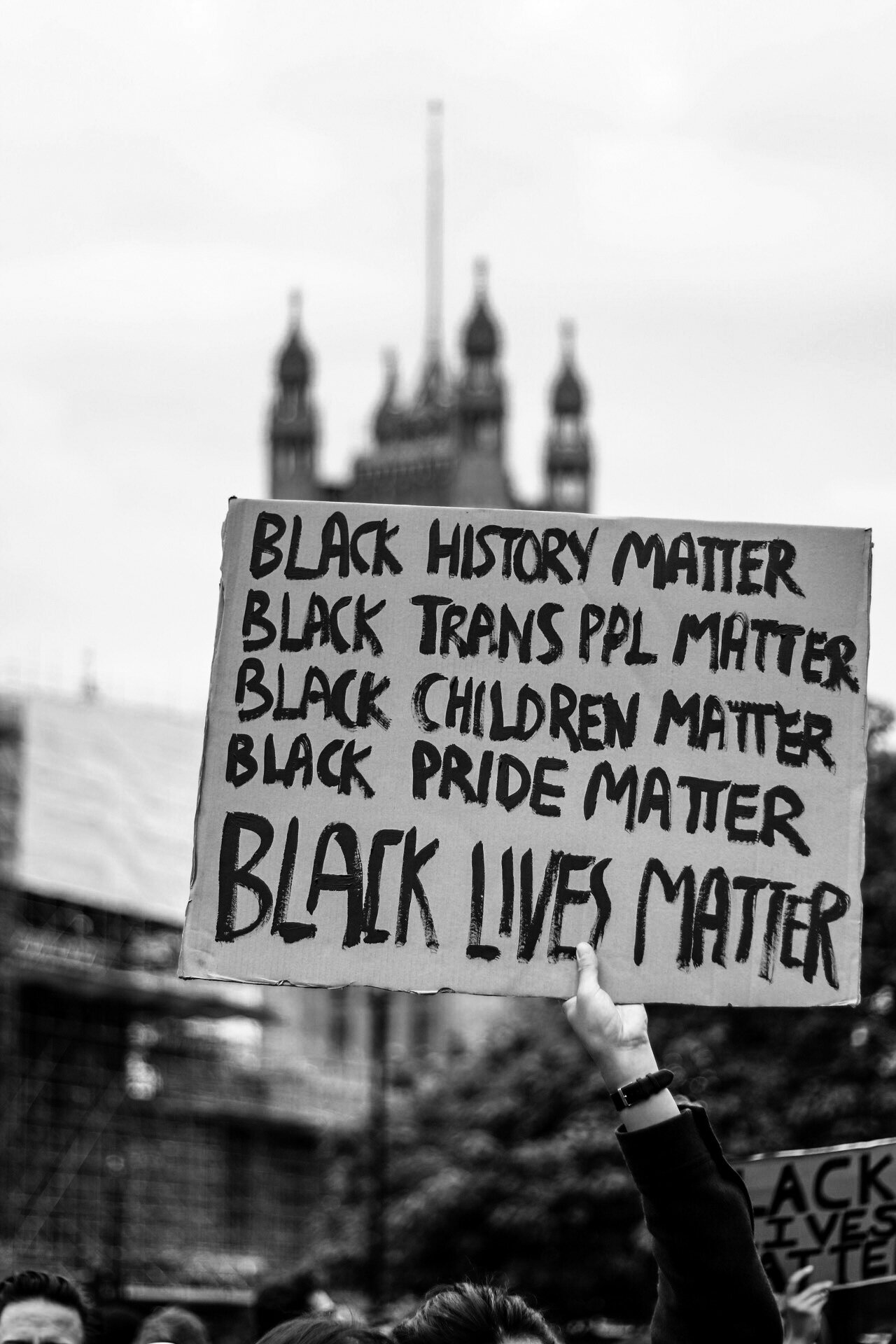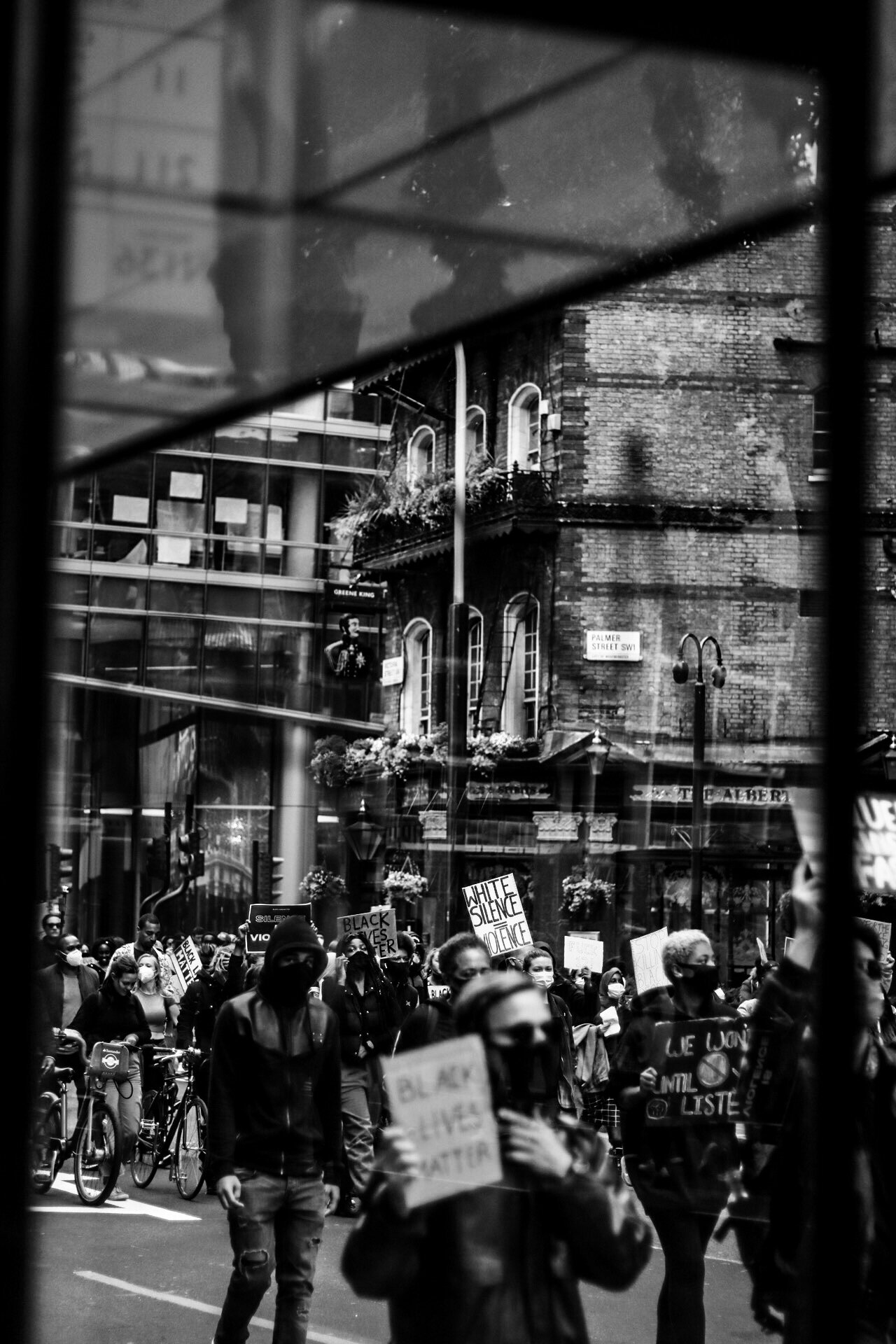5 MINUTE READ.
“GET YOUR KNEE OFF OUR NECK” poster, taken at Black Lives Matter Protest, June 2020 in London. All images taken by JAKIRA.
If you live in the UK, please consider sending an email to your local MP to encourage them to help stop the eviction of Palestinian families from their homes in Sheikh Jarrah, East Jerusalem in Occupied Palestine. Thank you.
Palestinians in Sheikh Jarrah, East Jerusalem (located in Occupied Palestine) are currently facing threats of forced eviction from their homes, a potential war crime that was permitted by the Jerusalem District Court in 2020. A total of 58 Palestinians, including 17 children, are due to be stripped from their homes over the next few months for Jewish settlers to move in. Over the past couple of weeks, we have witnessed Israeli settler groups, who are being backed by the Israeli state, terrorise and murder Palestinian residents, including women and children. The people of Palestine need our help, now more than ever.
This will be my second time attending a protest with my camera and although I’m not a Pro Photojournalist, I thought I would share some tips that I’ve learnt and that I think will be beneficial to those who may be attending their first protest as a photographer.
1. Bring a Zoom Lens
At the Black Lives Matter protest that I attended in June of last year, I made the mistake of just taking a 50mm lens. I was still able to get some pretty great images but as I was using a Prime Lens, with just a 50mm focal length, I couldn’t get many variations in my shots. On the plus side, a 50mm f/1.4 or 1.8 weighs significantly less than other Primes and Zoom Lenses, which is perfect for a long day of shooting, however, due to the focal length, you have to take several steps back or forward in order to get the shots that you need. This means that you will essentially be wasting time on getting everything that you want for your shot into the frame and potentially miss out on great photo opportunities. I’d really recommend taking a Zoom Lens as you can get a great variation of shots with a decent focal range, without the need to constantly move back and forth.
2. Shoot in RAW
I can’t stress this one enough; whenever you shoot, whatever it is, please make sure that you are shooting in RAW! There have been so many times when shooting in RAW has saved me so I’d really recommend that you do it. As protests are quite fast-paced, you might end up shooting over/under-exposed; shooting in RAW will allow you to get details back in over-exposed images. It’s also important to note that RAW files are significantly larger than JPEG files, so ensure that you bring an SD card and CF card that has a decent amount of storage on it. The last thing you want is to have to choose between images that are equally as amazing to each other to delete them and free up space on your card(s), you might end up deleting your best images but I guess you’ll never know! That thought haunts me every day.
3. Wear dark clothing
If you’re a photographer, black is probably all that you wear so maybe this one isn’t worth mentioning but if your wardrobe consists of colour, this one’s for you! If the protest is well-organised, there will be members of staff who are there to chaperone the event. These staff members will tend to wear clothing that makes them visible to protest-goers, such as Hi-Vis Vests, for obvious safety reasons. As you will probably be on the sidelines most of the time whilst photographing, which is where the staff will typically stay; wearing dark colours will allow people to easily identify members of staff, should they need any assistance, without causing any confusion. It will allow you to blend in with the crowd and make it harder for you to be identified, should you end up in a tricky situation with the police.
4. Watch the space around you
If you are attending a protest, expect there to be a lot of people around you when you’re shooting. As we all know, camera gear isn’t cheap so to avoid potentially colliding with someone and having to claim on your camera insurance, make sure to take a second to look over your shoulder when you want to take a few steps back for that shot. Better safe than sorry, as my Mum always says!
5. Obscure faces of protest-goers
This ties into the ethics of Protest Photography which is something that many photographers, specifically in the photojournalism field, are against. I won’t discuss the opposing views in this post but I, personally, believe that it’s important to obscure the faces of protestors, wherever possible, to avoid any issues. According to the law in the UK, street photography and photojournalism (in which faces are not obscured) is permissible so it is all dependent on what you think is morally correct. Protest photography should accurately represent the emotions felt during the protest, yes, but unless you are handing out model releases to everyone, how can you determine whether or not they would like for an image of them to be shared online? Beyond general privacy reasons, your image could be the evidence used in a Court of Law to place someone at a scene and potentially convict someone of a crime that they aren’t necessarily guilty of, and I don’t know if I could live with myself if it were one of my images. I’d recommend using a blurring tool in post-production or just a black box, like in the image above, to obscure faces in your images. I have just covered the eyes as I believe that this is the most identifiable feature of the human face, and also because I like to keep some portrayal of emotion in my images when possible. As we are in a pandemic, most people will (hopefully) be wearing facemasks anyway so I’d recommend prioritising photographing protest-goers who already have their faces covered. Alternatively, you can adjust your camera settings in a way that distorts faces in-camera (e.g. using a wide aperture such as f/1.4 or f/2.8 which will produce levels of bokeh that will make faces unidentifiable.)
Will you be attending a protest in support of Palestine? I’ll be attending the March for Palestine protest in London, which will be taking place tomorrow at 12 PM. We will be marching from Marble Arch to the Israeli Embassy. I hope to see you there!
If you would like to learn more about the current situation in Palestine and want to find out how you can support the movement, please visit the following Instagram pages:
[TRIGGER WARNING // EXCESSIVE VIOLENCE, DEATH] The following pages share images and video footage of violent attacks and, in some cases, death. Please take this into consideration before viewing.
@letstalkpalestine — Info-graphics covering the situation in Palestine, as well providing a collection of links to support Palestine (i.e. writing a letter to your local MP, which they have kindly provided an email template for!)
@subhi.taha — 6-10 minute in-depth IGTV videos, sharing important facts to know about what’s happening in Palestine, as well as explaining the map of Palestine. This page provides subtitles on their videos.
@eye.on.palestine — Sharing on-the-ground raw images and footage of the violent attacks in Palestine. This page also provides translations for post captions in several languages, including English, Arabic, Turkish, Russian, Spanish and Indonesian.
Thanks for reading!
Stay safe,
JK ♡







